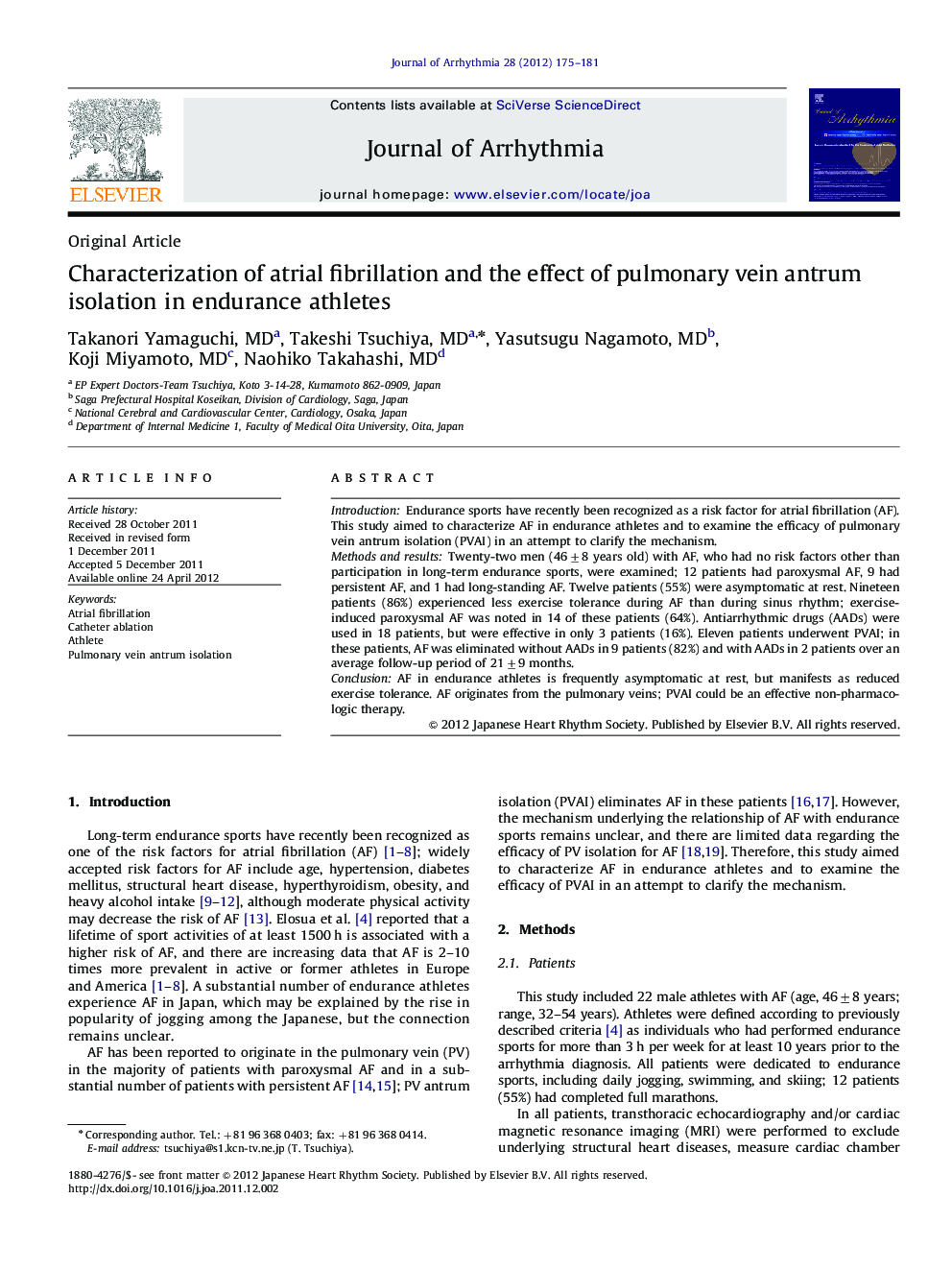| Article ID | Journal | Published Year | Pages | File Type |
|---|---|---|---|---|
| 2957775 | Journal of Arrhythmia | 2012 | 7 Pages |
IntroductionEndurance sports have recently been recognized as a risk factor for atrial fibrillation (AF). This study aimed to characterize AF in endurance athletes and to examine the efficacy of pulmonary vein antrum isolation (PVAI) in an attempt to clarify the mechanism.Methods and resultsTwenty-two men (46±8 years old) with AF, who had no risk factors other than participation in long-term endurance sports, were examined; 12 patients had paroxysmal AF, 9 had persistent AF, and 1 had long-standing AF. Twelve patients (55%) were asymptomatic at rest. Nineteen patients (86%) experienced less exercise tolerance during AF than during sinus rhythm; exercise-induced paroxysmal AF was noted in 14 of these patients (64%). Antiarrhythmic drugs (AADs) were used in 18 patients, but were effective in only 3 patients (16%). Eleven patients underwent PVAI; in these patients, AF was eliminated without AADs in 9 patients (82%) and with AADs in 2 patients over an average follow-up period of 21±9 months.ConclusionAF in endurance athletes is frequently asymptomatic at rest, but manifests as reduced exercise tolerance. AF originates from the pulmonary veins; PVAI could be an effective non-pharmacologic therapy.
